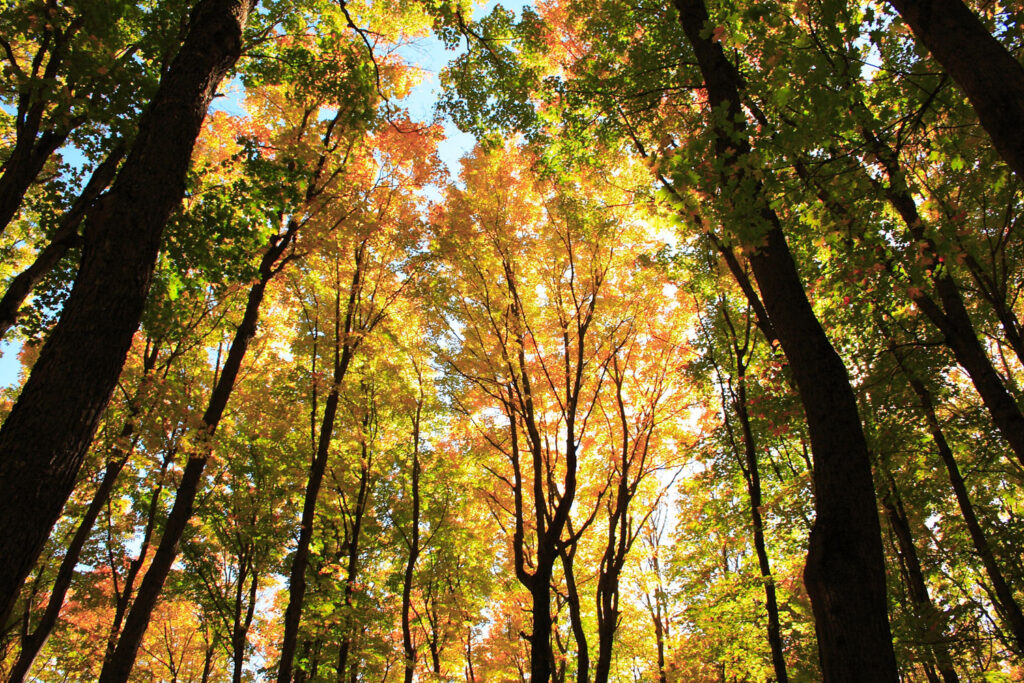It’s the time of year to do your fall garden cleanup. Rather than the tedious task of raking and bagging leaves and taking them to the landfill, the best way to reduce greenhouse gases and benefit your garden is to leave the leaves!

Leaves create a natural mulch that helps to suppress weeds while fertilizing the soil as it breaks down. The leaves also serve as a habitat for wildlife including lizards, birds, turtles, frogs, and insects that overwinter in the fallen leaves. These living creatures help keep pests down and increase pollination in your garden, so having a habitat for them in the fallen leaves can help to keep them around when you need them the most.
Micro-organisms are the life of soil, and they need food and nutrients all the time. The more leaves left on your garden, the more feed for these micro-organisms that make soil healthier and plants grow stronger. As the leaves decay, they add organic matter back into the soil, which lessens the need for fertilizer.
You can also include leaves in a compost mix to use on your crops. Mulching is a simple and beneficial practice you can use to create a healthy garden, and if you have trees, you have free mulch at your fingertips each fall. Mulching can protect the soil surface and help stop erosion from rainfall. Mulch also helps to moderate temperature extremes by keeping roots warmer during the winter and cooler in the summer, and helps to keep moisture in the ground, which is especially helpful during times of drought.
You can mulch leaves where they fall, chop them up with your mower, or choose to move the leaves. Leaves work well in between rows of crops or around fruit trees, areas where there is heavy machine or foot traffic, and shaded areas where vegetation doesn’t grow well. They can also be used in between growing seasons rather than leaving the soil bare. The leaves can also be useful in areas that have compacted soil as they help to reduce runoff as well as using their nutrients to create healthier soils.
Mulching leaves is only one way to use sustainable practices in your home garden. For more gardening tips, as well as information about how to participate in USDA’s People’s Garden initiative, check out The People’s Garden | USDA.
Content by Brooke Franklin, NRCS in Conservation and the USDA website.
